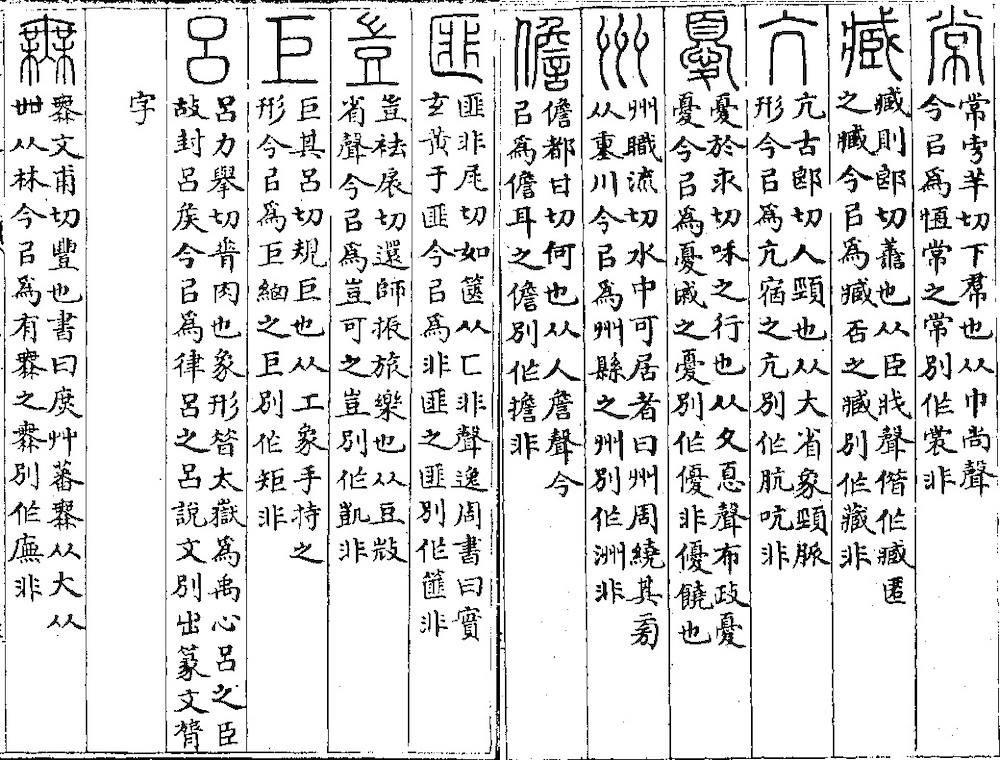Zitong 字通 "Versed in characters" is a book on Chinese characters written during the Song period 宋 (960-1279) by the calligrapher Li Congzhou 李從周, courtesy name Jianwu 肩吾 or Ziwo 子我, style Binzhou 濱州, who hailed from Linqiong 臨邛 (modern Qionglai 邛峽, Sichuan) or Pengshan 彭山 (also in Sichuan).
His research into Chinese characters is in fact the result of a joint interest by Li Congzhou and Wei Liaoweng 魏了翁 (1178-1237). The book, finished in 1220, served as a study of the difference between the commonly used standard (kaishu 楷書) or chancery script (lishu 隸書) and the ancient seal script (zhuanshu 篆書). Based on the Han-period 漢 (206 BCE-220 CE) character dictionary Shuowen jiezi 說文解字, the Zitong analyses the shape of 601 characters. These are not arranged in the radical system of the Shuowen jiezi, but according to the number of brush strokes of 89 radicals, which was a novelty at the time.
 |
|
Two pages from the appendix explaing the wrong use of characters. Siku quanshu edition. |
The text itself is written in chancery script, but the entries are written in seal script, like in the Shuowen jiezi. The Zitong is not a scholarly high-standing book, because as much as 123 characters are listed twice, and the radical system used by Li Congzhou is not very consistent because it sometimes uses the chancery script shape and brush stoke number, in other cases that of the seal script.
The explanations of the characters follows that of the Shuowen jiezi, and is not enriched by any new research.
The truly valuable part of the book is the appendix of 82 popular, but wrong, writings,like 衣常 instead of 衣裳 or 規巨 instead of 規矩. This appendix might not be an original part of the book but was added later.
| 【常】市芉切。下帬(=裙)也。从巾、尚聲。今㠯(=以)爲𢛢(=恆)常之常,别作裳,非。 | 常 read /ʑĭaŋ˩/ (chang). An underskirt. From 巾 "cloth" and the sound of 尚 /ʑĭaŋ˩˥/. Today used for the word "long-lasting", while [the original word] is written 裳 which is wrong. |
| 【巨】其呂切。規巨也。从工、象手持之形。今㠯爲巨細之巨,別作矩,非。 | 巨 read /gʰĭo˥/ (ju). Established practice. From 工 "tool" and the shape of a hand holding it. Today used for the word "large", while [the original word] is written 矩 which is wrong. |
The Zitong was printed in 1254 and is included in the series Siku quanshu 四庫全書, Zhibuzuzhai congshu 知不足齋叢書 and Congshu jicheng chubian 叢書集成初編.